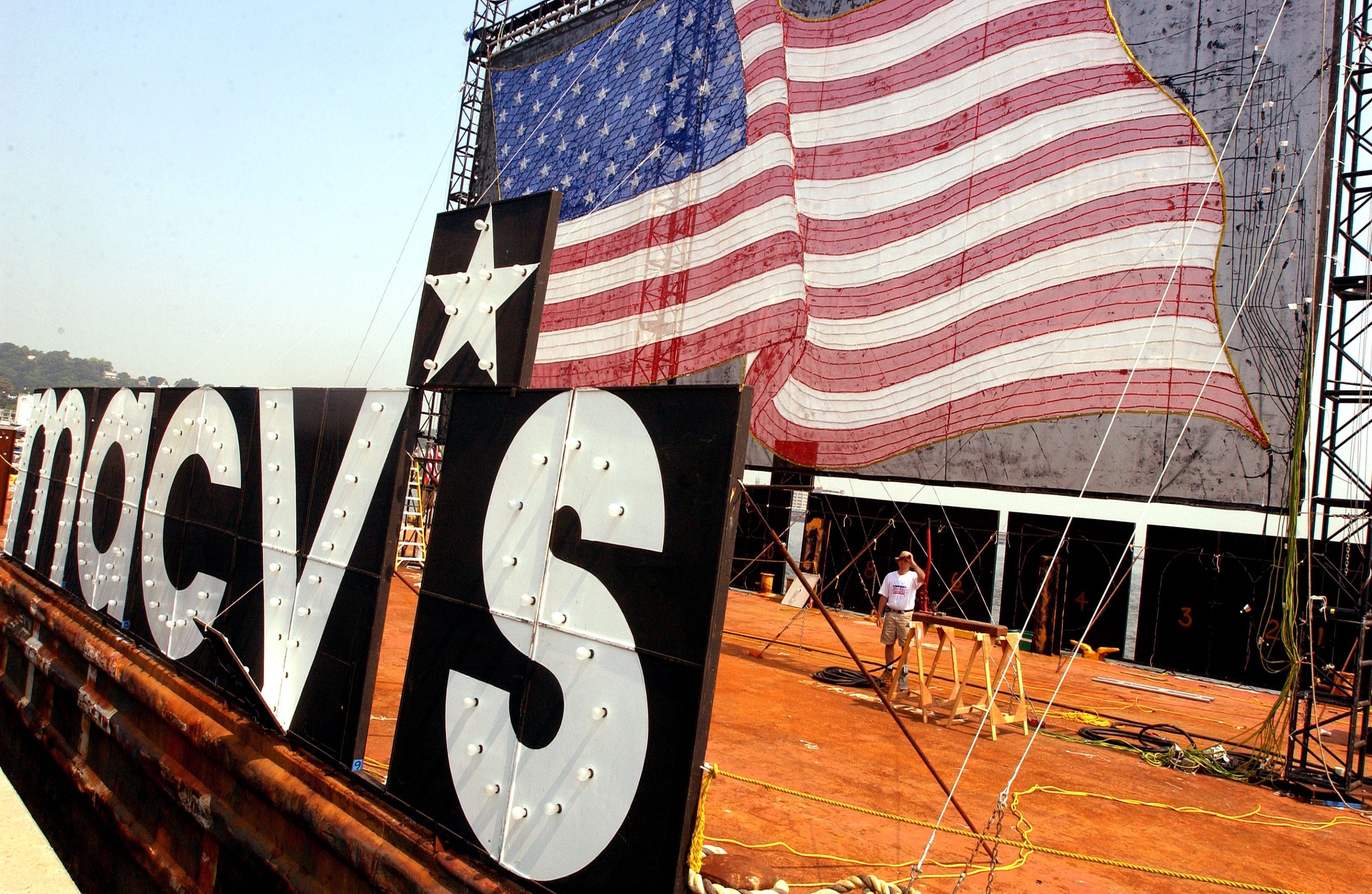By Emily Steinberger
Now jump to 2025, to a world overrun with AI and crypto. Would you be surprised to find out that some of the companies that were getting started in the days of yore are still ranking on this year’s Fortune 500 list?
As the U.S. approaches its semiquincentennial, Fortune takes a look back at 10 Fortune 500 companies whose age rivals the nation’s—with photos to prove it.
10. Macy’s, Inc.
Macy’s oldest subsidiary is John Shillito & Co., a Cincinnati-based department store founded in 1830, making Macy’s 195 years old. Before buying Shillito’s, Macy’s was R.H. Macy & Co., a dry goods store in New York City. On the store’s first day in 1858, founder Rowland H. Macy racked up a total of $11.06 in sales, which equates to over $400 today. Now, almost 200 years after Shillito’s was founded, Macy’s is still pulling rank on the Fortune 500 at 193.
9. CSX Corporation
One of the oldest companies still around today owns and operates railroads, and it’s ranked at 301 on the Fortune 500. CSX Corporation got its start in 1827 as the Baltimore and Ohio Railroad, though it didn’t take on the name CSX until 1980, when railroad companies Chessie System and Seaboard Coast Line united. The 198-year-old company was the first common carrier railroad in the U.S., and the original line covered 13 miles across one state—Maryland. The company now covers 21,000 miles over 23 states.
8. Consolidated Edison, Inc.
Before Consolidated Edison was Consolidated Edison, it was New York Gas Light Co., and it got its start in 1823 illuminating the street lights in a section of Lower Manhattan. By the early 1900s, the company added steam and electric to its repertoire after purchasing both New York Steam Co. and Thomas Edison’s Edison Illuminating Company. At 202 years old, the company still delivers these three utilities to customers and is ranked 286 on the Fortune 500.
7. Altria Group, Inc.
In 1822, George Weyman opened a tobacco store in Pittsburgh, Pennsylvania. The shop became the United States Tobacco Company in 1911, and it was purchased by Altria in 2009. Ranked 209 on the Fortune 500, Altria and the 203-year-old United States Tobacco Company—now renamed U.S. Smokeless Tobacco Company—are developing new, smoke-free alternatives to traditional tobacco and nicotine products.
6. Colgate-Palmolive Company
Though Colgate sold its first jar—yes, jar—of toothpaste in 1873, the company was founded almost 70 years earlier in 1806. Back then, William Colgate sold starches, soaps, and candles in his New York City shop, and soon branched out to perfumes, shaving cream, and, of course, toothpaste. In its 219th year, Colgate was ranked 212 on the Fortune 500.
5. DuPont de Nemours, Inc.
At 339 on the Fortune 500 is DuPont de Nemours, a chemical company that first got its start in gunpowder production 223 years ago. Founded by French chemist Éleuthère Irénée du Pont de Nemours, the company was incorporated in 1802, and construction on the gunpowder factory—called Eleutherian Mills—began soon after. DuPont, then E.I. du Pont de Nemours and Company, recorded its first sale two years later in 1804.
4. JPMorgan Chase & Co.
Would you believe that JPMorgan Chase—the 226-year-old company ranked 11 on the Fortune 500—was originally founded as a water company? Back in 1799, Alexander Hamilton and Aaron Burr, among others, founded The Manhattan Company to supply New York City with drinking water. Tensions between Hamilton and Burr heated up when Burr used a loophole in the company’s charter that allowed extra capital to be used for banking operations, thus creating The Bank of The Manhattan Company, which was in direct competition with Hamilton’s Bank of New York. The feud between the two co-founders led to the infamous duel that resulted in Hamilton’s death.
3. State Street Corporation
In 1792, on the corner of State and Exchange Streets in Boston, a new bank opened its doors: Union Bank. State Street Corporation came later, in the 1920s, after the merger of Union Bank (at that point, National Union Bank) and the State Street Deposit & Trust Company, a competing bank that opened on State Street in 1891. If you hadn’t figured this out already, the 233-year-old company gets its name from the street the banks started on, which was also known as the “Great Street to the Sea,” because of the area’s economic prosperity tied to Boston’s history as a port city. In 2025, the corporation ranked 198 on the Fortune 500.
2. The Bank of New York Mellon Corporation
Coming off the tail end of the Revolutionary War, The Bank of New York was created in 1784 by a group of people including Alexander Hamilton as a means of garnering foreign investment and fostering economic growth in the newly independent nation. The country was drowning in debt, and an emergency loan from a bank, Hamilton believed, was the only way to save it from bankruptcy. His plan worked, and the bank—as well as the country—is still around 241 years later, with BNY Mellon ranked 113 on this year’s Fortune 500. The Bank of New York, in fact, was the first publicly traded company on the New York Stock Exchange, which itself was founded on Wall Street in 1792.
1. Molson Coors Beverage Company
Older than the U.S. itself, Molson Coors Beverage Company got its start in 1774 when William Worthington began brewing beer in England. His business eventually merged with John Molson’s brewery (founded in 1786 in Montreal); Frederick J. Miller’s Plank Road Brewery (founded in 1855 in Wisconsin); and Adolph Coors’s Golden Brewery (founded in 1873 in Colorado). The four breweries, along with many others, merged over the course of the corporation’s 251-year history. Though the company today ranks 366 on the Fortune 500, it was not without its challenges: during the Prohibition era, Miller and Coors survived by brewing soda, near-beer and malt syrups.
